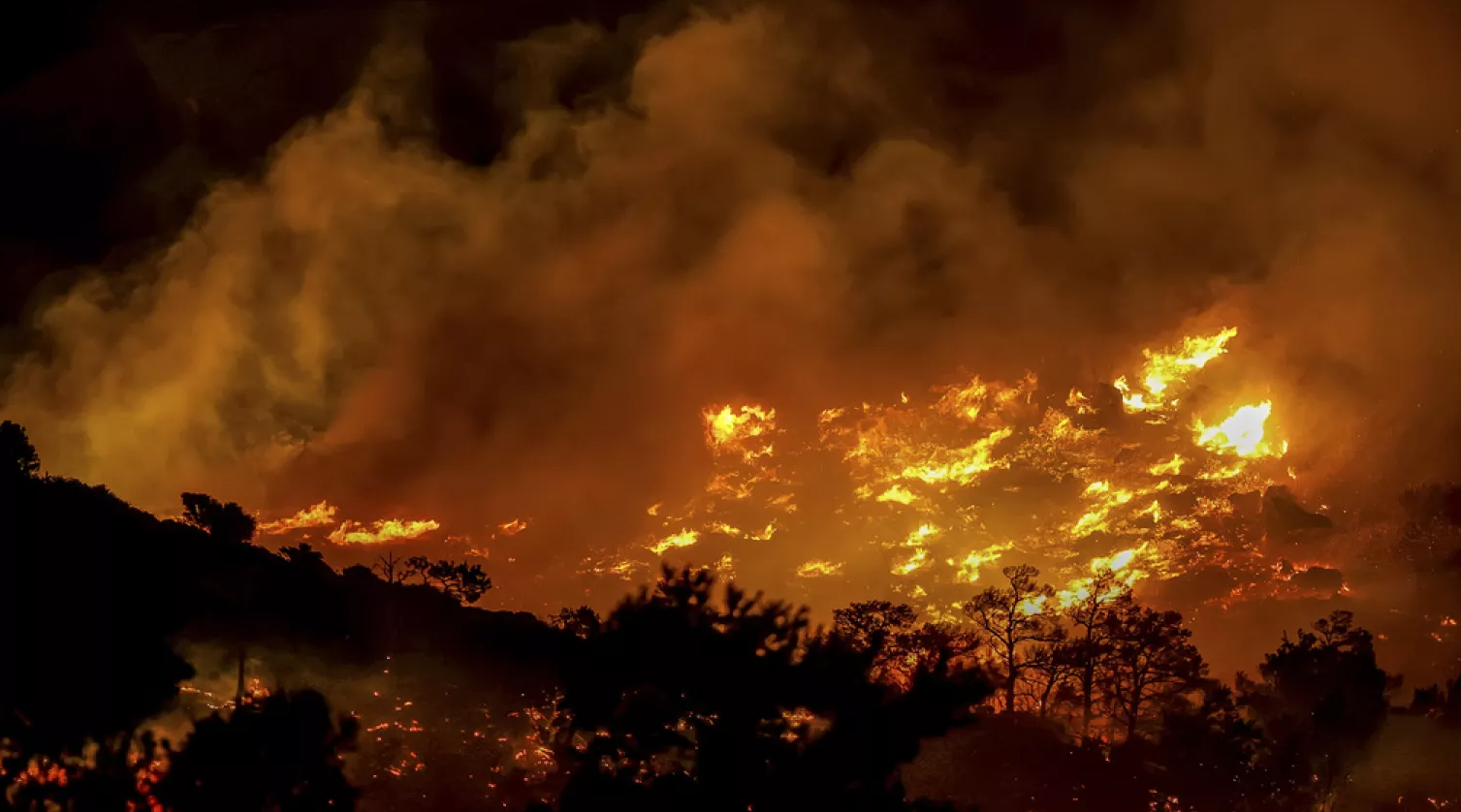
In Turkey's western Izmir province, wildfires burned for a second day on Monday, intensified by strong winds and arid conditions. More than 50,000 people were forced to flee their homes across five regions, with over 42,000 evacuated from Izmir alone, according to the national disaster agency AFAD. Officials warned that the country's increasingly hot and dry summers, driven by human-caused climate change, are fueling more frequent and intense blazes.
"This is not just an isolated summer event," said Forestry Minister Ibrahim Yumakli. "It's a pattern."
Elsewhere, France, Spain, Italy, Portugal and Germany issued health warnings, with even the usually temperate Netherlands bracing for soaring heat and high humidity.
"Western Europe is experiencing temperatures typically seen in late July or August — not June," said Samantha Burgess of the EU's Copernicus Climate Change Service. In many areas, temperatures were between 5°C and 10°C higher than seasonal averages, she noted.
Wildfires and Record Alerts
In southwestern France, wildfires ignited in the Aude region over the weekend, burning 400 hectares and forcing the evacuation of a campsite and a historic abbey. Though the fires are now under control, Meteo France has placed 84 of the country's 101 departments under orange-level heat alerts — a record number for this time of year.
From Wimbledon to the Colosseum, tourists and locals alike struggled to cope. "It's about 20 degrees hotter than I'm used to," said a sunburnt Scottish tennis fan in London.
Spain, meanwhile, is on track for its hottest June in recorded history, with daily highs of 43.7°C registered in El Granado. "The heat will persist at least until Thursday," said national meteorologist Ruben del Campo. In Seville — where global leaders gathered this week for a UN development conference — municipal workers sought refuge in fountains and shade as thermometers reached 42°C.
In Italy, red heat alerts were issued for 16 cities including Rome, Bologna and Milan. In the industrial Lombardy region, regional authorities announced plans to suspend outdoor work during peak heat hours to protect workers, responding to trade union demands.
Ripple Effects Across the Continent
In Germany, temperatures hit 34°C in parts of the west and southwest, prompting appeals to limit household water use. The heat has also lowered water levels on the Rhine River, disrupting shipping and raising freight costs. Meanwhile, electricity prices in both Germany and France surged as demand for air conditioning spiked.
Experts warn that extreme heat is among the deadliest of weather-related threats, killing up to 480,000 people worldwide each year — more than floods, earthquakes, and hurricanes combined. Vulnerable groups include the elderly, infants, outdoor workers and people without access to adequate shelter or cooling.
"Heatwaves are silent emergencies," said climate policy analyst Elise Schmidt. "They test everything — from healthcare systems to power grids — and leave a lasting economic and social toll."
Scientists: This Is the New Normal
Scientists point to fossil fuel emissions as the primary driver behind rising global temperatures. 2023 was the hottest year ever recorded on Earth, and 2024 appears to be following the same trajectory. Without drastic emissions cuts, experts say Europe should prepare for increasingly intense and early heatwaves — and the mounting costs that come with them.